Growing Lithops: ‘They Look So Much Like Rocks And Then Flower So Impressively’

SUCCULENTS > LITHOPS
Reviewed By COLIN SKELLY

Colin is a Horticulturist and Horticultural Consultant with experience in a range of practical and managerial roles across heritage, commercial and public horticulture. He holds the Royal Horticultural Society’s Master of Horticulture award and has a particular interest in horticultural ecology and naturalistic planting for habitat and climate resilience.
LITHOPS GUIDES
Even by the laid-back standards of succulents, Lithops take cool to a whole new level, as these evergreen plants look like a pair of stones.
They often have a translucent or dappled appearance, which is pretty enough, and then they burst into flower.
If you’re a gardener who also likes to collect unusual stones and has an interest in geology, Lithops is just the plant for you.
“I have found Lithops to be a great way to introduce children to succulents,” shares Master Horticulturist Colin Skelly.
“They are a great way to explain adaptation because they look so much like rocks and then flower so impressively.”
Overview
| Botanical Name | Lithops |
| Common Name(s) | Living stones, flowering stones, pebble plants |
| Plant Type | Perennial succulent |
| Native Area | South-east Africa |
| Hardiness Rating | H2 |
| Foliage | Evergreen |
| Flowers | Somewhat daisy-like; wide-open form with narrow rays and central ‘tuft’ |
| When To Plant | April |
Sunlight
Preferred
Full sun
Exposure
Sheltered
Size
Height
0 – 0.1M
Spread
0 – 0.1M
Bloom Time
July to September
Soil
Preferred
Sand or loam
Moisture
Well-drained
pH
Acidic to neutral
These evergreen succulents mimic stones and, as a result, grazing herbivores in their native habitat of South-Eastern Africa safely pass them by.1Rewald, B., Eppel, A., Shelef, O., Hill, A. B., Degu, A., Friedjung, A., Rachmilevitch, S., & Bell, E. M. (2012, March). Hot desert environments. CABI eBooks. Retrieved June 16, 2023, from https://doi.org/10.1079/9781845938147.0196
These apparent stones are actually specialised leaves which occur in pairs that are separated by a slit.
By looking at Lithops, you wouldn’t guess that it is an evergreen, because quite a number of these living stones are grey or brown in colour.
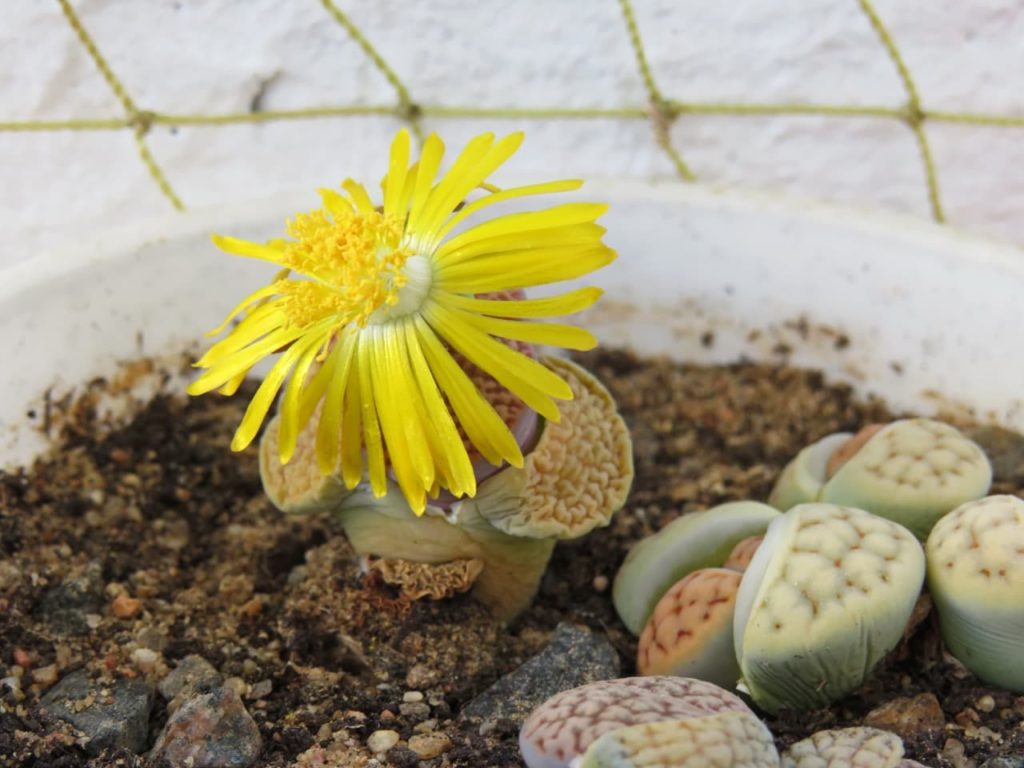
They have translucent windows on the upper surface to let in sunlight that look like blotches, dapples or mottling which, for the gardener’s purposes, make the plant more decorative.
However, the decorative value of Lithops does not end with this foliage.
In early autumn, they produce wide-open flowers that often bear a resemblance to common daisies.
Relative to the plants’ small size, the 3-4cm wide flowers look quite large.
Lithops Varieties
There are 38 species and many more cultivars in the Lithops genus, and virtually all of them can be grown as houseplants in temperate regions, including the UK.2Lithops N.E.Br. (n.d.). Kew Botanic Gardens. Retrieved June 20, 2023, from https://powo.science.kew.org/taxon/urn:lsid:ipni.org:names:16237-1
Though all varieties are tender plants with a hardiness rating of only H2, if grown as houseplants in the UK and Europe, they are considered low maintenance.
This is one of the reasons that all the following species, among others, have been awarded the RHS’s Award of Garden Merit.
L. karasmontana
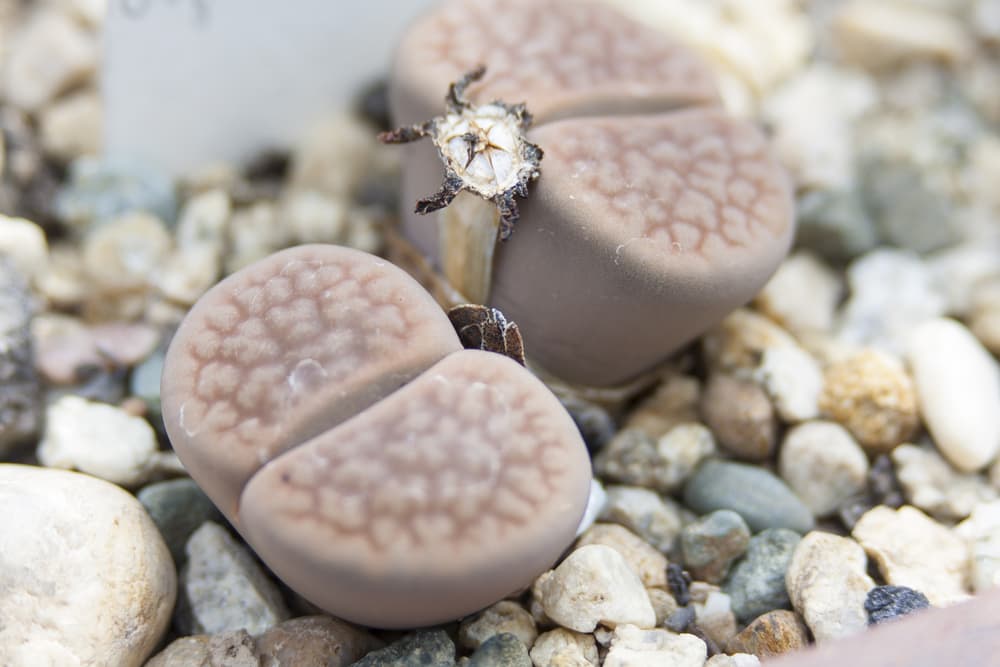
Beige with red-ochre mottling, bearing white flowers with a yellow centre.
L. lesliei
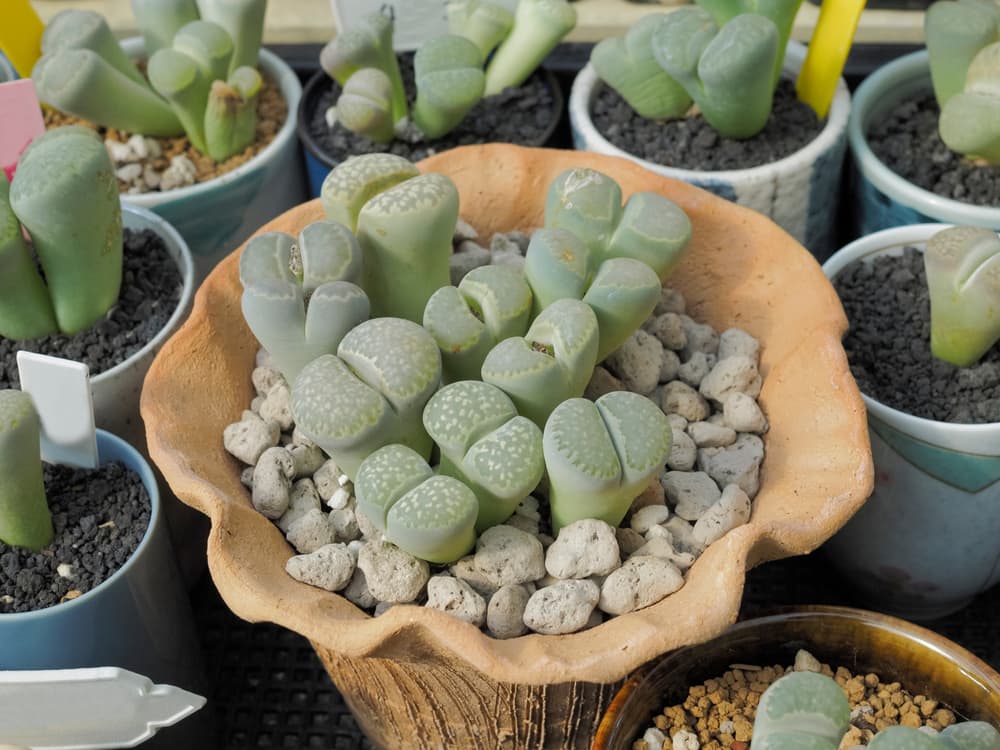
Of a brownish hue with olive-green mottling and white or yellow flowers.
L. dorotheae
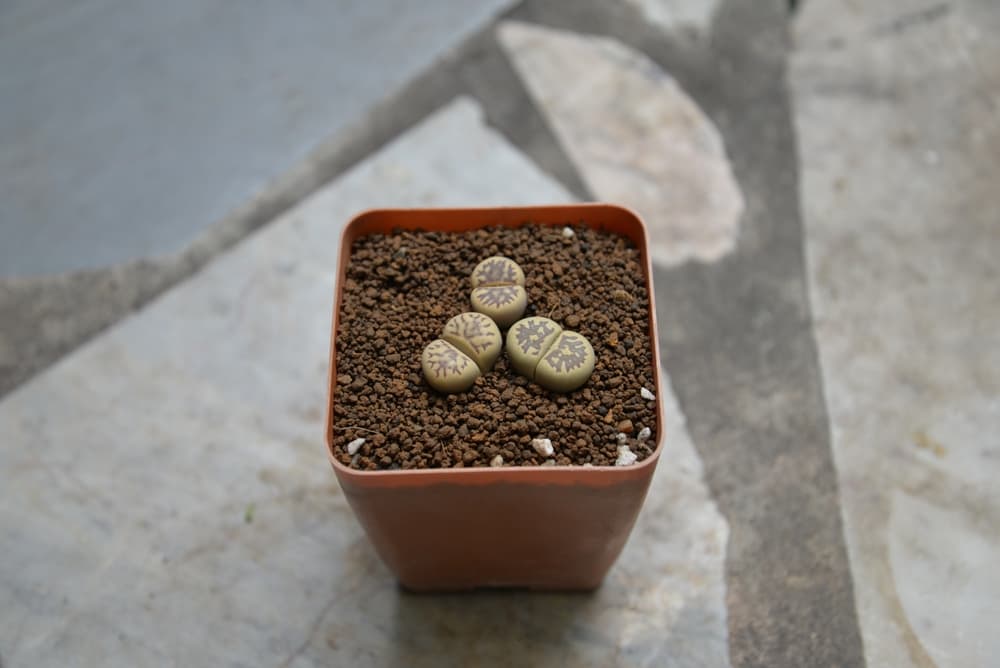
Beige with olive-green mottling, red-ochre markings and yellow flowers.
L. salicola

Greenish-grey with a darker blotch that is sometimes marbled bearing white flowers.
L. olivacea
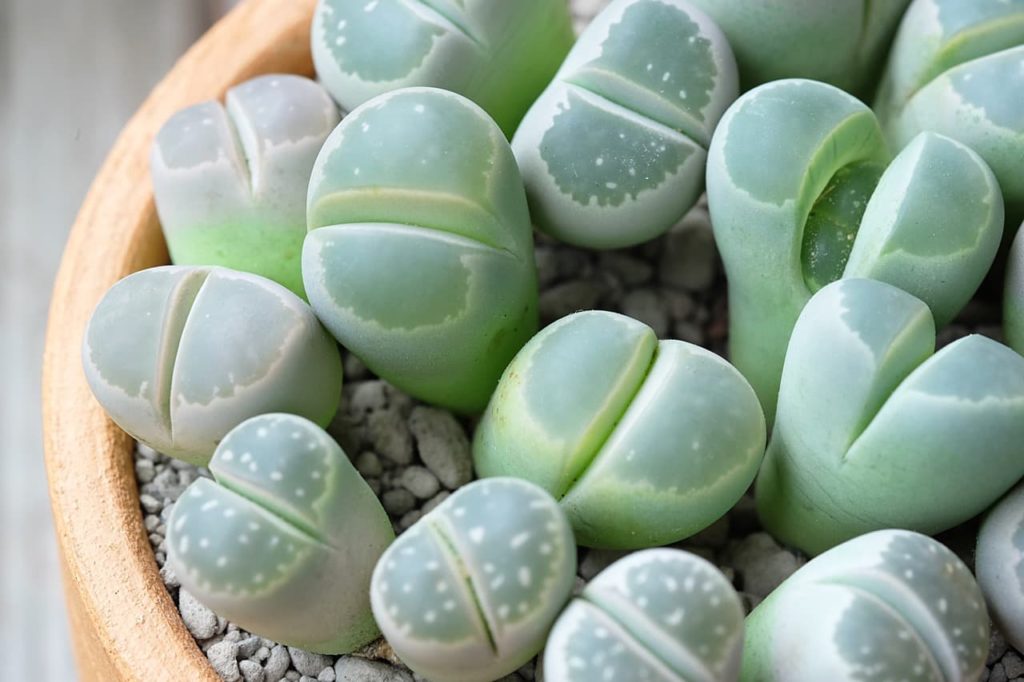
Dull green with an olive-green blotch with bright yellow flowers that have a medial white ring.
These plants typically reach a mere 3-4cm in height, with a 5-6cm spread.
Over time, some species can and do become bigger.
In all cases, the bulk of the plant is beneath the soil, where it is considerably bigger than what you may expect.
How To Grow Lithops
In the UK you should grow Lithops in containers.
The plants should be kept outdoors during the warm weather when the temperature is consistently above 12°C and indoors during the rest of the year.
Otherwise, you can grow them as houseplants all year round.
However, they do need several hours of direct sunlight.
Preferred Conditions
In a nutshell, Lithops prefer sunny skies, a dryish climate and sandy-to-rocky free-draining soil.
The aspect of the pots should preferably be south-facing but east or west-facing will also be fine.
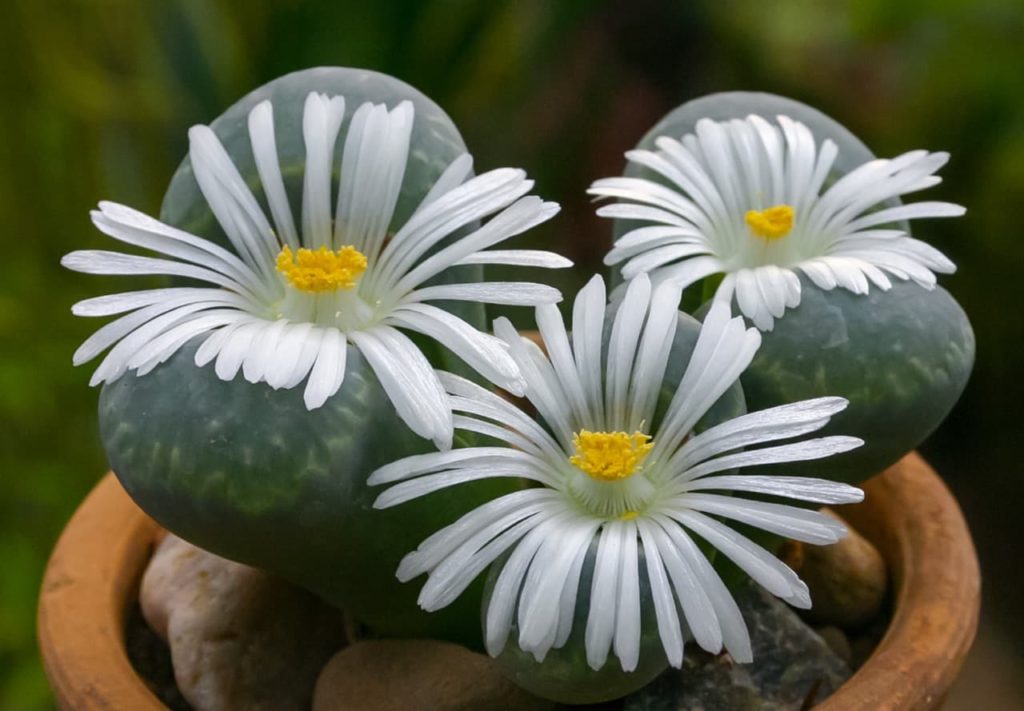
Though technically Lithops should be sited in a sheltered spot, this is not a strict instruction.
This is because these potted plants would not be kept outdoors in the UK during the cold weather and their very low rise and stubby profiles make them impervious to strong winds.
Sunlight
In the UK, Lithops will thrive in full sun, with several hours of direct sunlight, outdoors or indoors.
When kept outside, potted Lithops must not be exposed to a scorching sun during very hot weather, even in the UK.
Note that sunlight is necessary for this plant to flower.
Soil Requirements
Lithops do best in free-draining media that is pebbly and sandy with little organic content.
The simplest and most error-free way to go about it is to obtain a high-quality commercial cactus potting mix and amend it in moderation with grit, perlite or both.
Otherwise, you would have to make your own cactus medium but be sure that it is neither overly rich nor moisture-retentive.
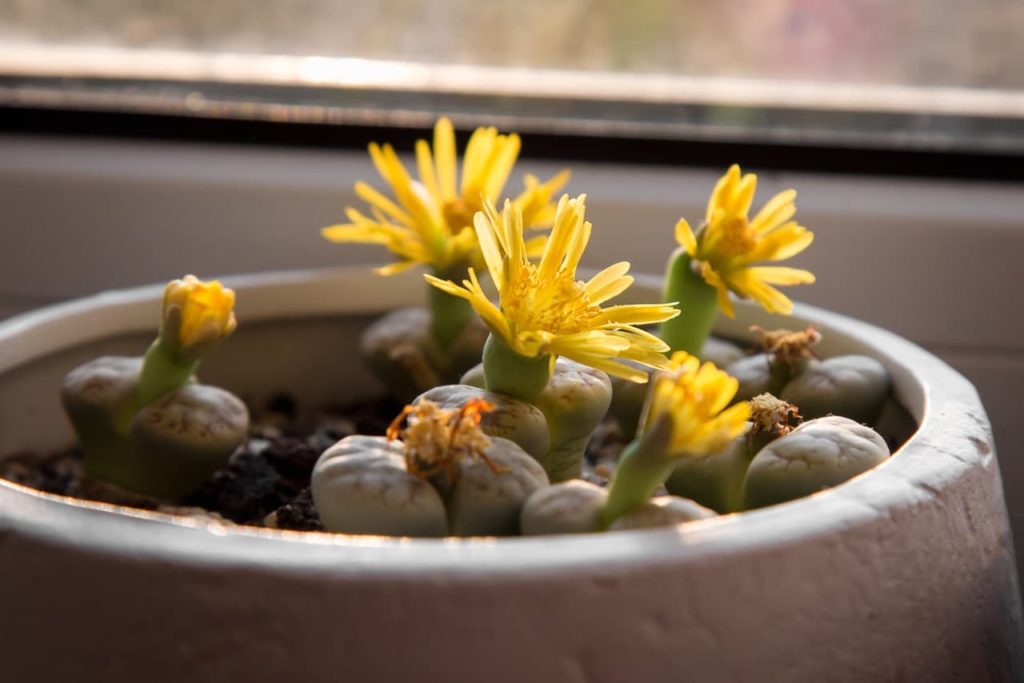
In very warm and humid climates, you can add fungicide powder or solution to the growing medium to stave off fungal diseases, but this is not strictly necessary in the UK as long as you do not keep potted Lithops outdoors during hot, muggy weather or in cold, humid conditions.
The soil pH should be in the slightly acidic to neutral range.
Pots should be made of terracotta or clay and have multiple drainage holes.
Watering
Watering Lithops is a bit more complicated than watering other succulents.
This plant should be watered like other succulents, but only during spring and from late summer to October-November, which are its periods of active growth.
Water so that the medium is made damp all the way down, then water again after the medium has become dry and stayed dry for a couple of days.
How frequently you water depends on the temperature, exposure and the type of pot.
Sometimes, these plants go dormant and do not grow actively during the summer.
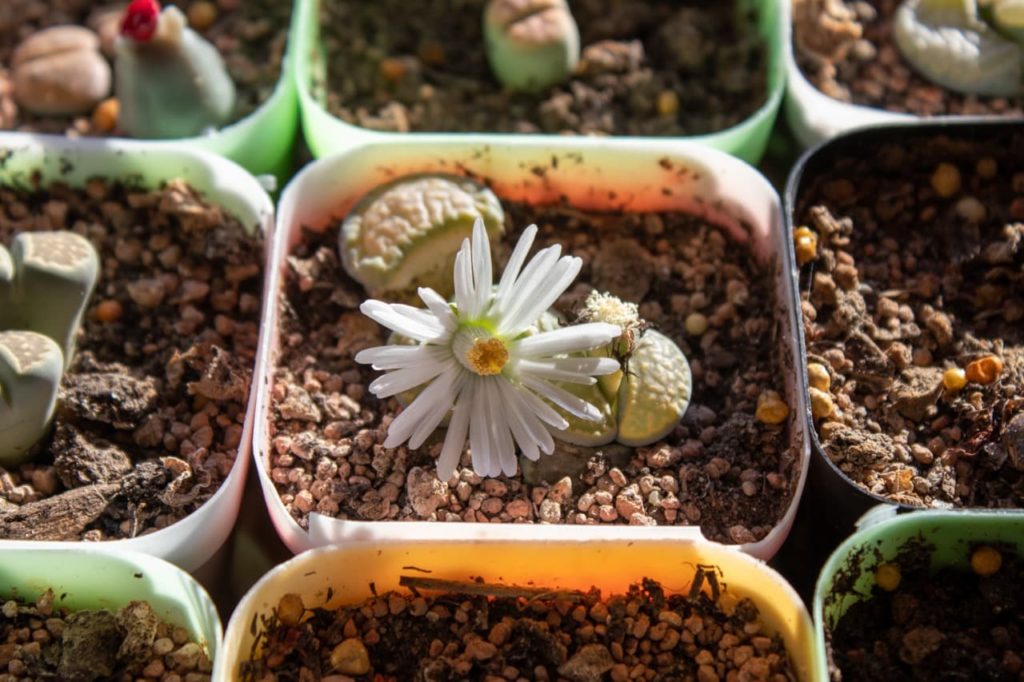
If, during the summer, the plants are kept in a warm spot with little sun, then they should be watered sparingly, but if they are kept outdoors and get full sun, then they should be watered periodically.
Allow the soil to dry out before rewatering.
A good indicator of when to water is the living stones themselves.
If they look full and plump, all is well, but if they appear wrinkled or as if they are shrivelling, they need a drink.
Do not water these plants in winter.
Start watering again as soon as the new pair of leaves have taken the place of the old, shrivelled ones.
Growing From Seed
Lithops are typically grown from seed.
The process is not exactly easy, but it is quite a reliable way to grow this plant.
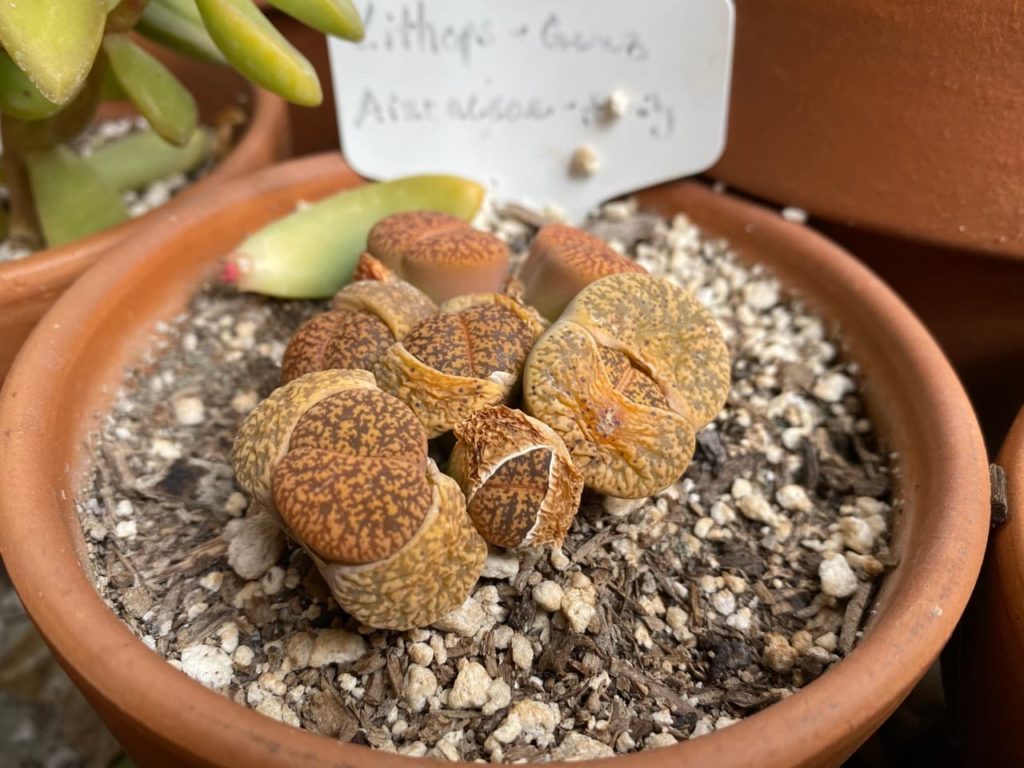
Seeds should be sown in trays or pots and the best time to do so is April.
They need bright, indirect light and high humidity to germinate.
Make sure to water the seedlings more than you water mature plants.
Lithops Care Guidelines
Repotting
Living stones grow very slowly, they do not drain the medium of nutrients, their roots are fragile and they are prone to transplant shock.
All these are very good reasons not to repot Lithops as you would other plants.
Once they are all set in a pot, they are good for twenty years or more.
If you need to repot a Lithops plant for whatever reason, the best time to do so is in the middle of summer.
Before potting on Lithops, water the plant and be aware that these plants have fragile roots and are prone to transplant shock.
Propagating
‘Living Stones’ are propagated by two methods, by seed and by offset division.
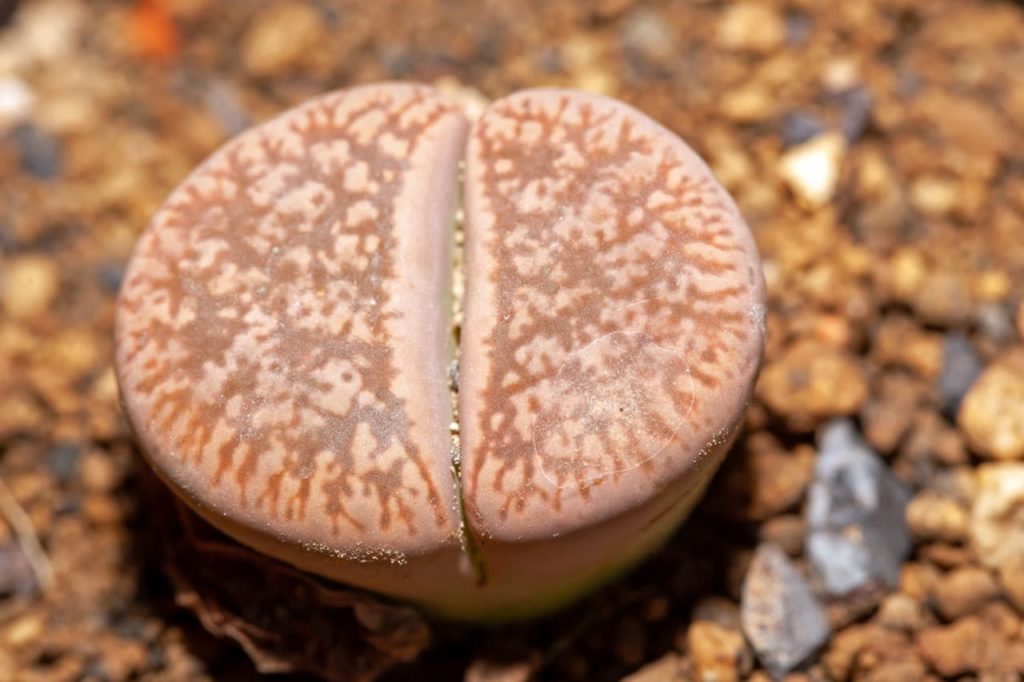
In April they may be grown from seeds, as outlined above.
Alternatively, when an offset has matured and looks like a viable plant, it may be divided and potted on, thereby becoming a new plant.
Common Problems
As with other succulents, root rot is a common problem if living stones are grown in moist, water-retentive soil or if they are overwatered.
If the soil is kept moist during winter, which is a no-no, the older pair of leaves will not shrivel away and you’ll end up with an awkward plant with a double pair of leaves, the new on top of the old, which will give rise to knock-on problems.
In the UK, they may be attacked by two pests, aphids and mealybugs.
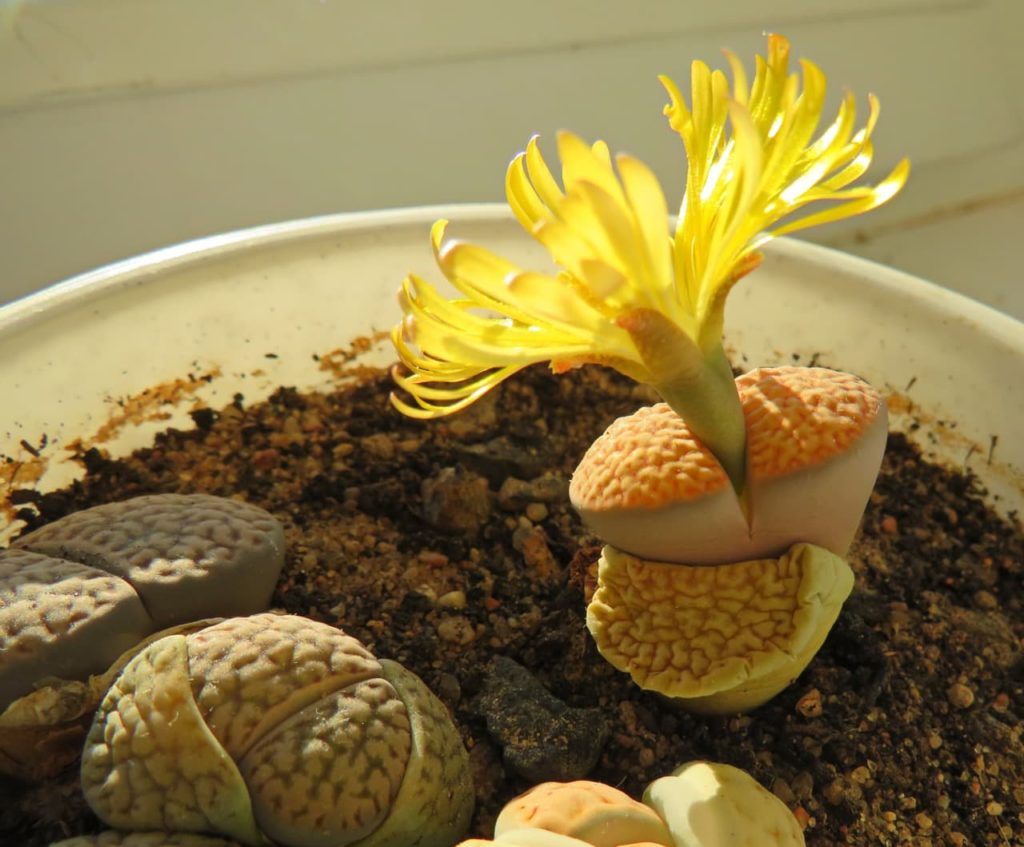
Aphids do not pose too serious a problem, but mealybugs are difficult to catch early and are not easy to eradicate.
In the UK, Lithops are generally disease free.
References
- 1Rewald, B., Eppel, A., Shelef, O., Hill, A. B., Degu, A., Friedjung, A., Rachmilevitch, S., & Bell, E. M. (2012, March). Hot desert environments. CABI eBooks. Retrieved June 16, 2023, from https://doi.org/10.1079/9781845938147.0196
- 2Lithops N.E.Br. (n.d.). Kew Botanic Gardens. Retrieved June 20, 2023, from https://powo.science.kew.org/taxon/urn:lsid:ipni.org:names:16237-1

